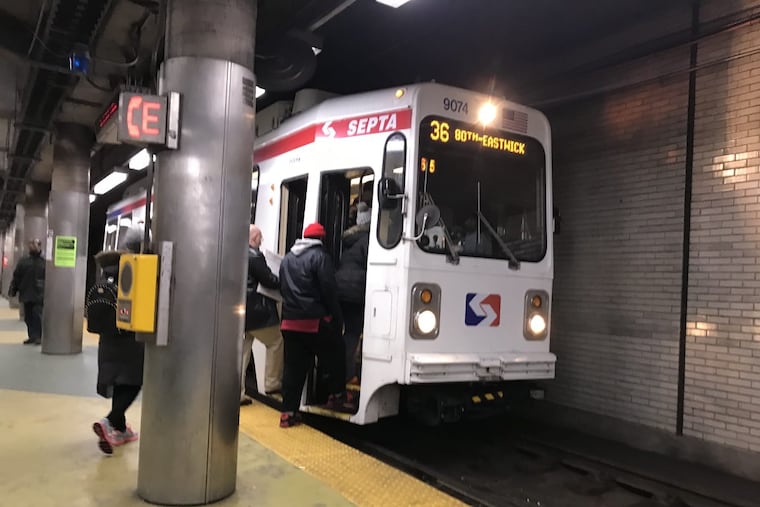State lawmakers must seize on an opportunity to upgrade public transit in Pa. | Editorial
Thanks largely to the federal infrastructure package, state legislators have a chance to reverse the decades of service cuts that have left our regional transit system a shell of its former self.

In Pennsylvania, the conversation around public transit often involves an awful lot of “remember when.”
Remember when the Pennsylvania Railroad was the world’s largest corporation and paid out dividends for 100 years straight? Remember when you could take the train to Cape May? Remember when we had the largest trolley system in the world?
This year — thanks to the confluence of a large federal infrastructure package and Pennsylvania’s own “fiscal cliff” — state leaders have an opportunity to decide during upcoming budget negotiations whether transit in Pennsylvania remains in “remember when” territory, or if the state can finally start to reverse the decades of service cuts and route discontinuations that have left our regional transit system a shell of its former self.
» READ MORE: SEPTA proposes renaming rails system to help people get around
Thanks to the bipartisan infrastructure deal, billions of federal dollars are available for a variety of local transportation projects. The bill has dedicated funding to expand accessibility options like elevators for riders on legacy rail systems — including Philadelphia’s Broad Street Line, Market-Frankford Line, and trolleys. There’s also money to help replace SEPTA’s trolley fleet — some of which dates to the 1980s — and funding for system expansions like the King of Prussia Rail project.
There is a catch, though: To get the federal money, Harrisburg lawmakers must commit to providing some state and local funds to help cover the bill.
This hasn’t always happened before. Compared with peer transit systems — like the MBTA in Boston or the D.C. Metro — SEPTA has long received less state and local assistance for capital costs, a gap that has only grown in recent years as regions like New Jersey, New York, Chicago, and Boston have made investing in their transit systems a priority. While observers expect Gov. Tom Wolf to include dedicated support for Pennsylvania’s transit agencies in his budget address on Feb. 8, the administration has yet to publicly confirm this. Doing so would be both prudent and popular.
» READ MORE: How Philadelphia will benefit from infrastructure package.
Despite the impact of the COVID-19 pandemic on ridership across the nation, there is evidence of widespread support for public transit projects. In 2021, all 11 ballot measures dedicating new revenue for transit service were approved by voters around the country. Cities like Seattle, which have significantly less inherited infrastructure than places like Philly, have successfully grown their transit ridership.
In the commonwealth — where the Philadelphia area provides nearly 40% of the economic activity — transit remains an important way for people to get around. In pre-pandemic times, the 13-mile Market-Frankford El carried nearly 200,000 riders a day, compared with the 130,000 motorists who travel on the 14-mile stretch of I-76 between King of Prussia and Roosevelt Boulevard on a typical day. Unlike highways, where more users mean more congestion and slower trips, more transit riders facilitate more service, which means trips get faster, not slower. This is an important dynamic to consider at a time when the southeast is home to most of Pennsylvania’s population growth.
Thanks to the federal infrastructure package, Pennsylvania has a real chance to upgrade the commonwealth’s largest transit system. Now, it is time for Wolf and state lawmakers to make it happen.